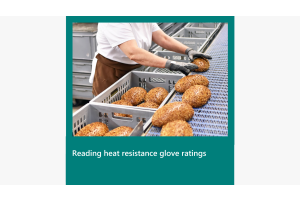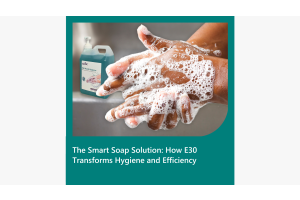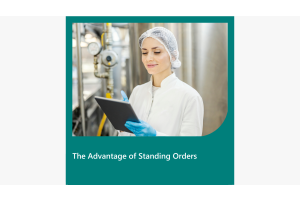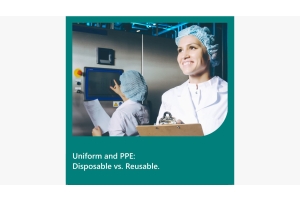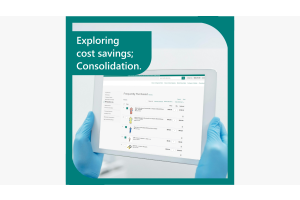Blog
-
November 15, 2021
Buckets and pails are very familiar products, but they are often confused with one and another. However, there is a difference, and that main difference is the purpose.
Bucket is the more familiar term. It is a cylindrical upright open container with a handle. The primary purpose of a bucket is to transport liquids and that is why they are popular in the food industry. In addition to carrying liquids such as water and milk they are also used to carry bulk dry ingredients such as flour, sugar and spices. They can also be used for cleaning and carrying chemicals. They are designed to be a quick efficient way or transporting liquids or solids in reasonable sized quantities. Some buckets may come with lids, this additional feature is favourable to ensure the safety of your produce short term.
A pail, although having the same cylindrical appearance, is designed to be used for storage. One of the big differences is a pail usually has an air-tight or a tamper-proof
-
October 15, 2021
While large parts of the Australian food processing market are now automated, there are still inevitably areas where contact with food is necessary. While we typically think of this in terms of gloves, there are many other materials that also come into contact with food. How and why are some products appropriate and others not?
Hygiene and quality are two of the highest priorities. So, it is critical to assess what materials come into contact with food at all times.
Some of the more familiar materials include plastic, metal, rubber, and textiles. Some materials such as glass ae now rarely found in food production areas. Glass is often considered too dangerous to be allowed into production areas, its brittleness increases the potential of it smashing and contaminating food with sharp shards. This is obviously unacceptable, and many food facilities are glass free.
Textiles, such as cotton gloves, hair nets and wipes, are generally suitable and food
-
October 01, 2021
In these unprecedented times masks have become very familiar to us, but what is the difference between a mask and a respirator in their application in food manufacturing?
In our industry, masks are generally worn to protect food from the wearers respiratory emissions and a respirator is generally worn to reduce the wearers exposure to harmful particles that may be present in the air.
In many environments within the food processing industry, air quality is affected by the tasks performed, for instance, anything involving fine powders, chemicals, or dust. Our lungs are able to withstand a small amount of exposure and naturally filter out harmful particles, however being repeatedly or regularly exposed can create a build-up with potential long-term damage. Confined spaces also pose a risk as fumes and or powders are unable to disperse. So, protecting our respiratory system is important, and ensuring we aren’t spreading germs is also critical, particularly while working with
-
September 17, 2021
Coveralls are considered an essential piece of protective wear in most food production areas. As their name suggests, a coverall is a single garment that covers the entire body, trousers, top and hood. The purpose of a coverall is to protect the worker’s body and clothes from messy or hazardous labor-intensive jobs.
Some coverall features that many customers find important include elastic cuffs, hoods, sealable zip cover, water resistant and breathable material, colour variance and a range of sizes.
- Both disposable and reusable coveralls are used throughout the industry. While they share many features, the disposable options are often preferred as they can be replaced easily, and not likely to harbor bacteria.
- Hoods and elastic cuffs both serve a similar purpose, protecting the worker by preventing irritating materials making contact with skin.
- Water resistance or protection levels are usually described by European Standards called
-
August 09, 2021
Wipes are used to make surfaces hygienic and clean. Their aim is to remove small particles, germs and or contaminates. They often partner up with chemicals for optimal results and are truly an essential part of cleaning. Used both during and between shifts, they are useful for removing accidental spills on the go, as well as in deep cleaning. Wipes come in many forms, and there is a number of factors to consider when choosing which wipe is the most appropriate for your needs.
Particularly important in the food processing industry are the colour options minimal lint. Using a blue option contrasts the cloth to the food, which is especially important in cloths and wipes as they are typically smaller and easy to misplace. Lint refers to the little bits of fluff, or when smaller particles of the wipe are left behind. Lint is considered a contamination risk, so choosing low lint options is especially important for critical production areas. Typically, the higher the quality of the
-
July 12, 2021
Food recalls are an outcome food manufactures avoid at all costs. They occur when food is considered unfit for consumption or is a serious health risk to the community. They are expensive and have damaging consequence to the manufacture. Awareness of food safety has increased extensively, and there are now many systems and products to manage and ensure food safety.
Food recalls are issued by governments on a state or territorial level and are managed by FSANZ (Food Safety Australia and New Zealand). FSANZ are responsible for ensuring awareness, and that products are removed from shelves.
A few of the common causes of food recalls include:
- Foreign matters -this includes anything that has or may have fallen into the food, causing a contamination risk.
- Allergens - if a product has an undeclared allergen in it, or not clearly labeled the public must be notified.
- Biotoxin/ microbial – containing
-
June 15, 2021
Food is essential, and something we all thrive on; we require good food for our health and as an enjoyable feature of our social lives. But how can something we both enjoy and require, harm us?
There are many types of illnesses caused or linked to food. Some of the most common include Salmonella, E.coli, Clostridium perfringens, Hepatitis, Campylobacter Staphylococcus aureus (aka staph) Norovirus and Listeria. Food illnesses can occur in domestic situations, however, with more people preferring the convenience of bought meals and snacks, it is important that we help reduce the risk of food poisoning, by minimising any potential contamination.
How do food illnesses start? Bacteria, virus, and parasites are all around us in our day to day lives, which is why we have immune systems. However, they become harmful to humans when they multiply or spread, if we are not immune to them, or consume too much. When food becomes affected by a foreign bacteria/virus it is considered
-
May 03, 2021
Many types of gloves are available for Food manufacturing plants, including nitrile, vinyl and silverlined. A quality product that does not pose contamination risks to food production is paramount. Nitrile first became available in the 1990s and has become the most popular glove type within the food processing industry since then. There are many advantages to nitrile, and the varying thickness and options make it one of the most popular glove materials in the food processing industry.
Polyvinyl Chloride (PVC), or Vinyl gloves, as they are commonly referred to, are a relatively cheap option; they are a form of synthetic rubber and are stiff and less breathable than other materials. Their main benefit is their cost, usually considered reasonably cheap. Typically preferred when multiple ingredients are in use, gloves must be changed frequently.
However, due to their stiff nature, they often will tear when donning the glove, resulting in many employees choosing to wear two gloves
-
March 01, 2021
Hex Lok vs. Euro Thread
If you have ever had the experience of trying to connect the wrong threaded handle to a brush or squeegee head, you will know how different they are.
Or maybe you haven’t, so what is the difference?
Both thread types are suitable for the food industry and are resistant to unscrewing. Euro Thread is your typical thread type, featuring a tapered thread, and easily screws on and off. This a universal thread type and is typically quite endurable to circular motions. The Hex-Lok is a unique product with a hexagonal fitting, and an over fitting locking ring for maximum resistance.
The difference between them is the Hex-Lok solution can’t ‘unscrew’. When using deck scrubs and washing brushes, forming a pattern of ‘number 8’ is the most effective in ensuring maximum cleanliness, and how we naturally clean a surface. Often however, this loosens the end of the broom handle. While the Euro Thread has been
-
February 15, 2021
What Makes a Product Hygienic?
One of the most important aspects of producing the food we all need and love, is maintaining good hygiene. Essentially, this involves keeping food processing areas clean with minimal risk of contamination. Keeping everyone from the producers to the consumers healthy and safe is of paramount importance.
There are many ways to ensure the safety of food by lowering potential risks. Different products, depending on their purposes, possess different features to ensure the minimum chance of contamination occurs.
Some of these main characteristics include:
Disposability
Many products that come in direct contact with food, are used only once and/or for a short period of time, such as one shift. This prevents cross contamination, particularly for industries that work with allergens. Also, single use products reduce the chance of harmful bacteria building up on gloves or clothing, that

